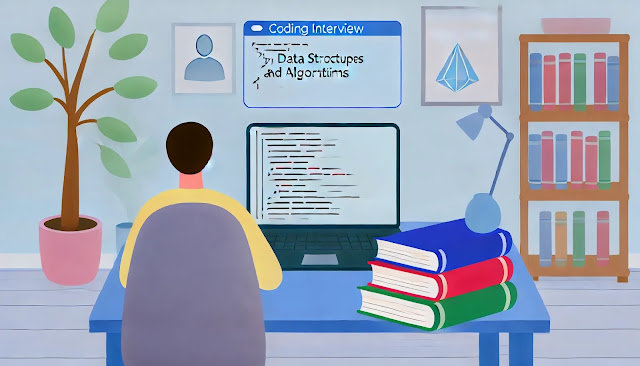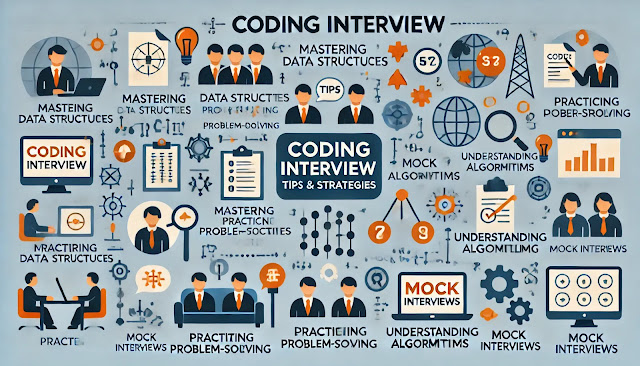The Ultimate Guide to Acing Coding Interviews: Tips and Tricks
Coding interviews can be a daunting part of the job application process for software engineers. With thorough preparation, the right strategies, and a calm mindset, you can ace your coding interview and land your dream job. Here’s your ultimate guide with essential tips, tricks, and strategies to help you succeed.
1. Understand the Interview Format
Before you dive into studying algorithms and data structures, it’s important to understand the structure of coding interviews. Most interviews are broken down into these components:
- Technical Screening: A phone or video interview where you solve a few coding problems online, typically using platforms like HackerRank or Codility.
- On-site/Virtual Technical Interviews: This includes multiple rounds of coding challenges, system design questions, and behavioral interviews.
- Coding Assessments: Some companies use timed assessments to evaluate your problem-solving skills.
Knowing the format will help you tailor your preparation and reduce surprises during the interview process.
2. Master the Core Data Structures and Algorithms
A significant portion of coding interviews involves questions on data structures and algorithms. Focus on these key concepts:
- Arrays and Strings: Understand how to manipulate arrays and strings, perform searches, and work with matrices. Practice problems like reversing an array, finding duplicates, or rotating matrices.
- Linked Lists: Practice implementing singly and doubly linked lists. Solve problems on detecting cycles, merging lists, and finding the intersection point.
- Stacks and Queues: Learn about stack operations (push, pop) and queue operations (enqueue, dequeue). Solve problems like balancing parentheses and implementing a queue using two stacks.
- Trees and Graphs: Trees (binary, binary search trees, AVL, etc.) and graphs (directed, undirected, weighted) are often asked in interviews. Focus on traversal techniques (in-order, pre-order, post-order, BFS, DFS) and problems like finding the shortest path or detecting cycles.
- Hashing: Hash tables (dictionaries) provide efficient ways to store and retrieve data. Practice problems like finding the first non-repeating character or identifying subarray sums.
- Sorting and Searching: Understand common sorting algorithms (quick sort, merge sort, bubble sort) and searching techniques (binary search). Be ready to explain their time complexities.
- Dynamic Programming: This is a tricky but essential topic. Work on problems like the Fibonacci sequence, knapsack problem, and longest common subsequence to master the concept of breaking problems into subproblems.
Tip: Use platforms like LeetCode, HackerRank, and CodeSignal to practice a variety of problems. Start with easier problems and gradually move to more complex ones to build your confidence.
3. Learn Problem-Solving Strategies
The way you approach a problem in a coding interview is as important as solving it. Here are some key strategies to adopt:
- Clarify Requirements: Before jumping into coding, clarify the problem statement. Ask questions to remove ambiguity, understand edge cases, and confirm input/output requirements. This shows the interviewer your analytical thinking.
- Break Down the Problem: Divide the problem into smaller, manageable parts. For example, if the problem involves a tree, consider breaking it into traversal and node processing.
- Think Out Loud: Explain your thought process as you work through the problem. This gives the interviewer insight into your problem-solving skills and helps them guide you if you’re stuck.
- Use Pseudocode: Before writing actual code, outline your solution using pseudocode. This approach helps you plan the steps of your solution, making it easier to translate into real code.
- Optimize Before Implementing: Consider edge cases and optimize your solution in pseudocode before you begin writing the actual code. Always aim for an optimal solution, but be prepared to explain why your approach is the best you could think of.
4. Practice Code Writing by Hand
In many interviews, you'll be asked to write code on a whiteboard or in a shared document. This can be challenging since you won’t have an IDE to catch syntax errors or provide autocomplete suggestions. To get comfortable:
- Write code on paper or a whiteboard as part of your practice.
- Focus on clean syntax, proper indentation, and handling edge cases.
- Double-check your code for common mistakes like off-by-one errors, null pointer exceptions, and incorrect loop boundaries.
5. Know How to Analyze Your Code
Interviewers often ask you to discuss the time and space complexity of your solution. Make sure you understand:
- Big O Notation: Learn to calculate the time complexity (how runtime grows with input size) and space complexity (how memory usage grows with input size).
- Trade-offs: Be prepared to discuss the trade-offs between different solutions. For example, a solution that uses more memory to achieve faster performance might be preferable in some cases.
6. Work on Real-World Projects
Interviewers are often interested in practical coding experience. Working on real-world projects helps you demonstrate your skills beyond solving abstract problems. Here are a few project ideas:
- Build a REST API: Implement a simple REST API using a framework like Flask, Django, or Node.js.
- Data Analysis: Use Python’s pandas and NumPy to analyze and visualize datasets. This shows your ability to work with real-world data.
- Open Source Contributions: Contributing to open-source projects on GitHub demonstrates your collaboration and coding skills.
7. Mock Interviews are Key
Simulate coding interviews to get used to the pressure and format. Websites like Pramp, Interviewing.io, and LeetCode offer mock interview sessions where you can practice solving problems with live feedback from other developers.
8. Behavioral Interview Preparation
Coding interviews aren't just about algorithms; they also include behavioral questions to assess your soft skills. Be ready to talk about:
- Your Experience: Explain your past projects, coding experiences, and why you’re passionate about software development.
- Problem-Solving Mindset: Discuss challenges you’ve faced, how you approached solving them, and what you learned from the experience.
- Teamwork: Share examples of how you’ve worked in teams, contributed to projects, and dealt with conflicts.
Tip: Use the STAR method (Situation, Task, Action, Result) to structure your answers during behavioral interviews.
9. During the Interview: Stay Calm and Focused
- Manage Your Time: Pay attention to time management. If you’re stuck, don't panic. Ask for hints or try another approach.
- Check for Edge Cases: Before considering the problem solved, think about edge cases like empty inputs, very large inputs, or special characters.
- Test Your Code: If possible, write some test cases to validate your code's correctness. This shows you care about producing reliable software.
10. After the Interview: Reflect and Improve
After each interview, take some time to reflect on what went well and where you struggled. Identify areas for improvement and adjust your preparation strategy accordingly.
Final Thoughts: Acing coding interviews is all about preparation, practice, and having a strategic mindset. By focusing on core data structures, refining your problem-solving approach, and practicing regularly, you’ll build the confidence and skills necessary to succeed in your coding interviews.
Good luck, and remember: every problem you solve is one step closer to landing your dream job!







0 Comments